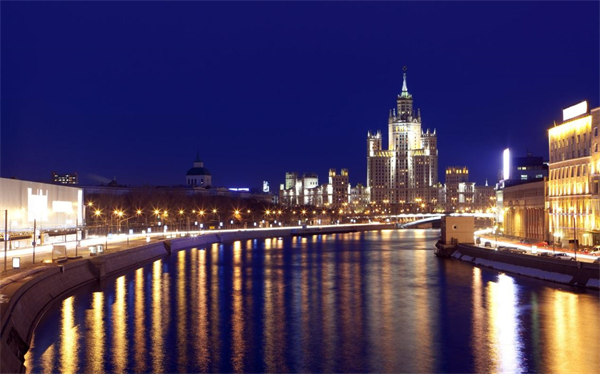- CURRENT LOCATION: HOME
- >> About Shaanxi
- >> Global Associations
- >> Sister Cities
- >>
- Shaanxi
Kaluga Oblast (Russia)
2017-04-10 16:09:23 , Source : The Government Website of Shaanxi Province
General situation
Kaluga Oblast is located 180 kilometers southwest of Moscow, the capital city of the Russia Federation and it borders the Moscow Oblast. It has an area of 29,900 square kilometers and a population of 1,048,400. Residents are mainly of Russian nationality, and the population density is 36.3 per square kilometer. As the capital city of Kaluga Oblast and with a history of 700 years, Kaluga was founded in the 13th Century and has a population of 345,900. Kaluga Oblast was founded on June 5th, 1944. Currently the governor of Kaluga Oblast is Anatoly Artamonov.
Administrative divisions
Kaluga Oblast can be divided into 45 administrative divisions. Altogether there are 19 cities, 10 urban-type settlements, 329 rural okrugs and territorial okrugs, and 3,189 rural localities. The second largest city is Obninsk (the science city of Russia), and it has a population of 108,100.
Climate
The topography of Kaluga Oblast mainly takes on the form of hills and plains. Most of the area is covered by a belt of conifers and broad-leafed trees. The climate is temperate: warm and humid during the summer and cold during the winter. The average temperature in July is 17.5℃, and that in January is -9.5℃. Average annual precipitation ranges from 550 to 650 mm. The vegetative period for crops is between 177 and 184 days and nights.
Resources
Kaluga Oblast boasts rich aquatic resources. The Oka River, the largest branch of the Volga River, is the largest river in Kaluga Oblast. The agricultural land of Kaluga Oblast covers an area of 1,300,000 hectares. There are 1,300,000 hectares of forest, and 43% of the land is forested, with 230 million cubic meters of wood. Currently, the known reserves in Kaluga Oblast include 19 mineral resources, coal, phosphorite, peat, kukersite, sandy clay for glass and construction, clay for bricks and pottery, and mineral water.
Transportation
The total length of railways is 868 kilometers, one third of which is powered by electricity. Important railways and highways are interwoven with each other. River transportation relies mainly on the Oka River.
National Economy
In Kaluga Oblast, non-state economy plays the dominant role and 70% of enterprises are private. In the past five years, the number of large, medium and small enterprises doubled and the GDP growth rate has been about 20%.
Agriculture and Husbandry
Kaluga Oblast mainly relies on husbandry including milk cow breeding and the simultaneous production and processing of milk and meat. Arable land accounts for two fifths of the total area, on which wheat, cole, potatoes and vegetables are planted. During recent years, the sowing and processing of flax has developed quickly, and has already become a new pillar of industry in the agriculture of Kaluga Oblast. Under the guidance of the implementation guidelines for Kaluga Oblast rural economy development before 2010, the living standard of farmers are improving quickly. People engaged in agriculture account for 9% of the total population.
Industry
Industry plays a dominant role in the national economy of Kaluga Oblast. There are more than 2,000 enterprises ranging over 16 categories, including machinofacture, metalworking, beverage production, processing of wood and paper pulp, electricity, and building materials. The main manufactured products of Kaluga Oblast are turbines, gas engines, road construction equipment, high-precision hydraulic power units, diesel locomotives, radiolocation equipment, radio electronic digital components, cashing machines, ceramic sanitary wares, optical fibers, furniture, paper, various drinks and shoes. Those engaged in industry account for 26% of the total population.
In the past three years, Kaluga Oblast's average annual foreign trade turnover was $216,000. The enterprises there have commercial dealings with more than 70 countries worldwide. Its main trade partners are Germany, Ukraine, Italy, China, Slovakia, The Czech Republic and Finland. Kaluga Oblast's main exports are machines, rail and highway auto, ferrous and non-ferrous metal products (55.8%), woods and products related to woods.
Kaluga Oblast's main imports include special lathe equipment, food, petroleum and chemical products, daily technological products, garments and cosmetics. Currently, there are more than 250 joint ventures in Kaluga Oblast. Foreign funding is concentrated in machinofacture, metalworking (33.3%), forestry, wood processing and the industry of paper pulp and paper (16.6%).
Science and Education
Half of the population in Kaluga Oblast has received medium education and above. There are 30,000 college students and 15,000 technical school students. The most renowned cadre training institutes are the Kaluga Oblast Branch of the Baumanski Technology Institute and the Obninsk Atomic Energy Institute. The scientific manpower of Kaluga Oblast ranks within the first five in Russia, and it boasts more than 40 scientific research institutes with the number of scientific researchers reaching 12,000.
Culture
Kaluga Oblast has cultural institutes such as an oblast theater named after Lunacharsky, an oblast records museum, and the state Ciokowski Space Museum.

Government Organizations



Other Links

Copyright@www.shaanxi.gov.cn All Rights Reserved
Registration Number:陕ICP备10004160号
